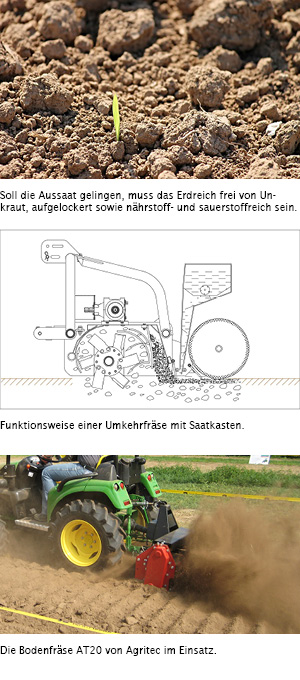 Why do you need to use a tiller for gardening and landscaping??
Why do you need to use a tiller for gardening and landscaping??
In many cases, the soil is not yet prepared when reseeding because it is partially still covered with old plants on the one hand and has a hardened surface which doesn’t provide enough fertile ground for seeds on the other. The nutrient-rich soil is generally also found further underground and should be brought to the surface so that the plants grow better. The supply of nutrients to the roots, which are still very short in the growth phase, is thus improved.
How does a tiller work?
A tiller is a soil tillage device used additionally to or instead of a plough to create a seed or plant bed. Its main job is to bring the nutrient-rich soil which is further underground to the surface. The soil is also loosened so that water and oxygen can get into the soil. Loosening the soil and levelling the ground, as well as letting more oxygen into the soil through tilling. This promote the decomposition process of organic masses such as harvest residues or green manure which are often worked into the soil during tilling to supply nutrients. The longer the tiller is driven and the quicker the blade shaft rotates, the more finely the soil is loosened. The blades, which are generally around 15 cm long and angled at the tip, rotate around a horizontal shaft (blade shaft) in the same direction as the tractor wheels. The blades cut even soil with a lot of roots out of the ground and throw it against a baffle plate, thus loosening, crumbling and mixing the soil. The tiller is one of the few pieces of agricultural equipment which does not need the tractor to pull, but rather brakes the tractor in order to allow for more intensive soil treatment. The actual tiller is usually placed in a housing to prevent accidents. The soil can generally be worked to a depth of up to around 15 cm with tillers, but there are also models with particularly large blade roller diameter which allow for working depths of up to around 30 cm
When and how should a tiller be used?
Tilling is generally done in the autumn or in the spring. If the soil should be prepared for winter, then the tiller is used to remove the dead plant remains from the soil and smooth the agitated soil again. Sowing is not done until the spring. If a new seedbed or planting bed should be created, a reverse tiller with seed box such as the UM41 is generally used in the spring. Care should be taken to ensure that the tiller speed is adjusted for the desired looseness of the soil, because the longer a tiller is driven and the quicker the blade shaft rotates, the more finely the soil is loosened.
Attachments
Produktvideo
https://youtu.be/yMTMSWMa0-8








